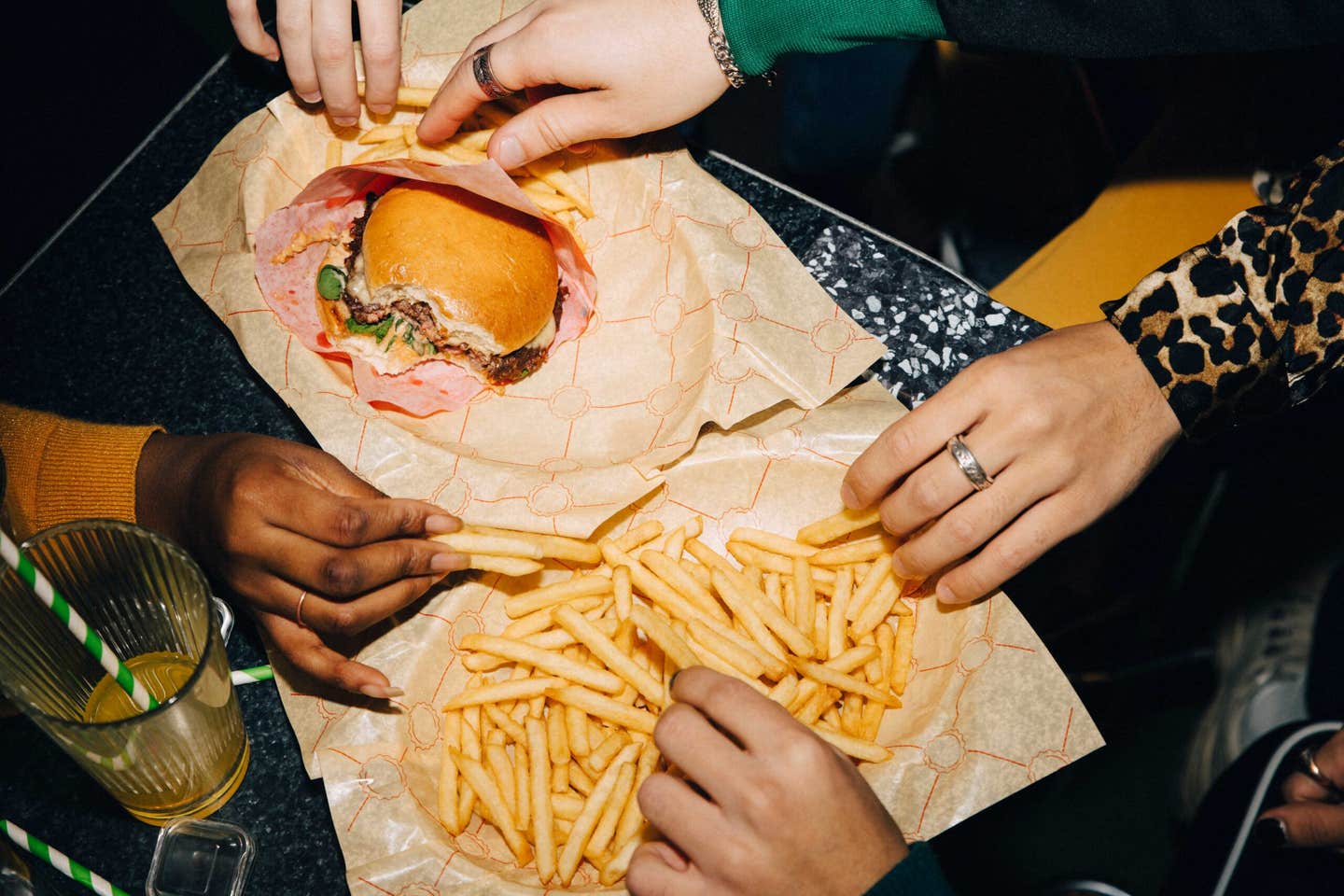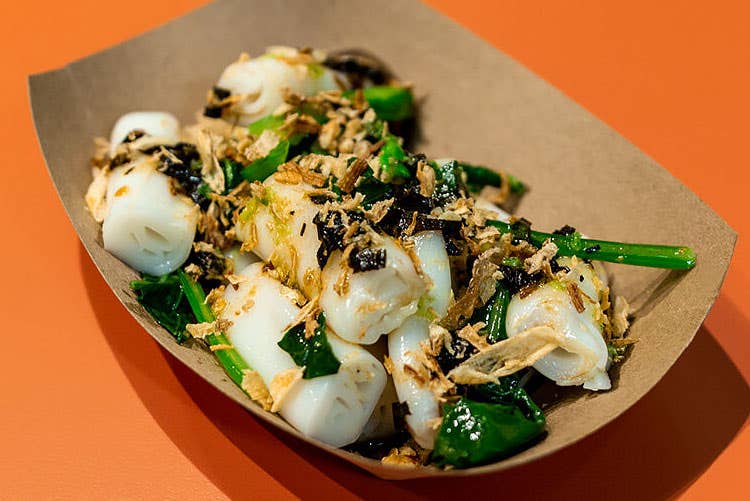
Why Gen Z Is Lukewarm About Dining Out
And what it would take for restaurants to lure them in.
Generation Z is dining in.
At least according to a new report released by American market research company The NPD Group, which surveyed 18 to 24 year olds in the U.S. about their dining habits. The report reveals that these Gen Z diners make, on average, significantly fewer annual visits to restaurants compared to prior generations at the same age.
Of course, the pandemic and its associated rounds of lay-offs (to which Gen Z was disproportionately vulnerable) accounts for a significant portion of this generational shift, though The NPD Group notes survey participants cited a host of other factors as well.
According to the survey findings, “Apparel, footwear, beauty, and technology are among the categories on which young adult Gen Zs spend their money… Many apparel brands have successfully tapped into Gen Z values, like diversity and empowerment, and, as a result, have gained a larger share of their spending.”
An increase in menu prices was also flagged as a major contributing factor for half of the Gen Z subjects surveyed.
As for the other half, Gen Z diners themselves suggest that it might not be so simple—and some restaurateurs would agree.

“When you look at Fat Choy, everything about it makes it appealing to a Gen Z person,” says Justin Lee, owner and chef of the Lower East Side restaurant which he describes as “kind of Chinese” and vegan. The setup is fast-casual, with most items (like the popular Green Veg Rice Rolls or Sticky Rice Dumplings) going for $10 or less. “It’s a very non-judgmental place, with extraordinarily good food that’s very good for the environment.”
And yet, Lee estimates that only about 10 percent of their customer base is Gen Z.
“I have no idea why. Do they have so much interaction with their phone, they don’t want it with human beings? It’s mind boggling,” he says. “We’re trying to be a progressive restaurant for the world. Those kids can talk about how [culturally aware] they are, but if they’re not voting with their dollars, and they’re buying chicken tendies down the block, it’s hypocritical.”
“I would like to support places in line with the practices I have in my own at-home eating,” muses Isabel Merrell, who just turned 25 and lives in Los Angeles. “But usually when I go out, I’m just looking for places that have really good food and atmosphere.”
Amy Morton, the owner of Found Kitchen, The Barn Steakhouse, and Stolp Island Social in Illinois and the mother of three Gen Z daughters, suspects that the reported reduction in Gen Z diners could be explained by the profound ways in which quarantine affected young adults’ habits.
“Their time out in the world as an independent being versus the amount of time that was Covid, it’s way more than it would be for someone who is 50 or 60. Their habits could take longer to shift back. And it could be the first time in their life that they had the experience of being a homebody,” she says.
Corey Smith, 24, lives in San Francisco and cops to maintaining a number of dining habits she adopted out of necessity during quarantine, like taking food to go and eating it outside at Ocean Beach.
And Merrell says she’s more of a homebody than ever. “People have built more of a relationship with being at home, whether it’s conscious or unconscious. There’s less drive to be out all the time,” she says. “There’s less of a baseline of always doing something, and more of a baseline of doing things on your own.”
For her, this at-home comfort is compounded by her excitement about a garden she began to grow during the pandemic. “It was one of the only fluid, dynamic things I had in my life at the time,” she says. And cooking with what she grew was one of the only ways to infuse her life with excitement, she says. Just recently, she planted a new crop of sungold tomatoes, fairy tale eggplants, and shishito peppers, which she says she looks forward to incorporating into her meals.
Smith says that when she does go out to a restaurant now, she does so with firm intentionality. “I want to get something really good, and something I can’t make at home. If I am going to try somewhere new, it should be an exciting thing.”
(A handful of the Gen Z sources I interviewed told me that quarantine either forced them to learn to cook or strengthened their cooking skills, by way of TikTok and other internet platforms that made it easy to experiment with new recipes.)
Meanwhile, some restaurant owners are grappling with the challenge of attracting this age group in time to convert them to the next generation of regulars.
At The Clam and also Market Table, two long-standing restaurants in New York City’s West Village, roughly 10 percent of customers are Generation Z, estimates Mike Price, President of Blackfoot Hospitality.
And when Gen Z diners do come in, it tends to be because they’ve identified either spot as a good location for a first date. “Quickly, those 22 year olds are going to turn into 28 year olds, looking to entertain a group of friends, not just splitting an app on a date,” he says.
Part of Blackfoot’s strategy for those two restaurants, as well as for its newer addition The Mary Lane, has been to hit social media as strategically as possible. “We’re leaning into those things in a way we haven’t before, because we know the necessity,” he says.
Blackfoot has experimented with engaging Gen Z influencers to post about the brunch at one of their locations in exchange for a free meal. Price also says that after a TikTok influencer posted about the Happy Hour at another Blackfoot restaurant, The Little Owl, “happy hour blew up” with Gen Z. Price is currently discussing with his team whether it makes sense to host a party around fashion week at The Mary Lane for even more exposure.
Price also says he has noticed that Gen Z clientele tend to come in for a dish or specialty cocktail that would be cumbersome to execute well at home, like perfectly shucked fresh oysters, which is the one item he won’t deliver on DoorDash.
“We watch long lines of people lined up for Supreme, or for whatever merch drop. There is this aspect to TikTok and Gen Z that is FOMO-oriented and needs exclusivity, and [they] will wait from sun up to sun down for literally nothing as long as they have validation on their TikTok when they get it,” says Lee.
When asked whether he would pay a TikTok influencer to hype up Fat Choy, Lee barely pauses.
“We probably should have done it already. It’s something we should do as soon as I get off this phone call.”
Keep Reading
Continue to Next Story










